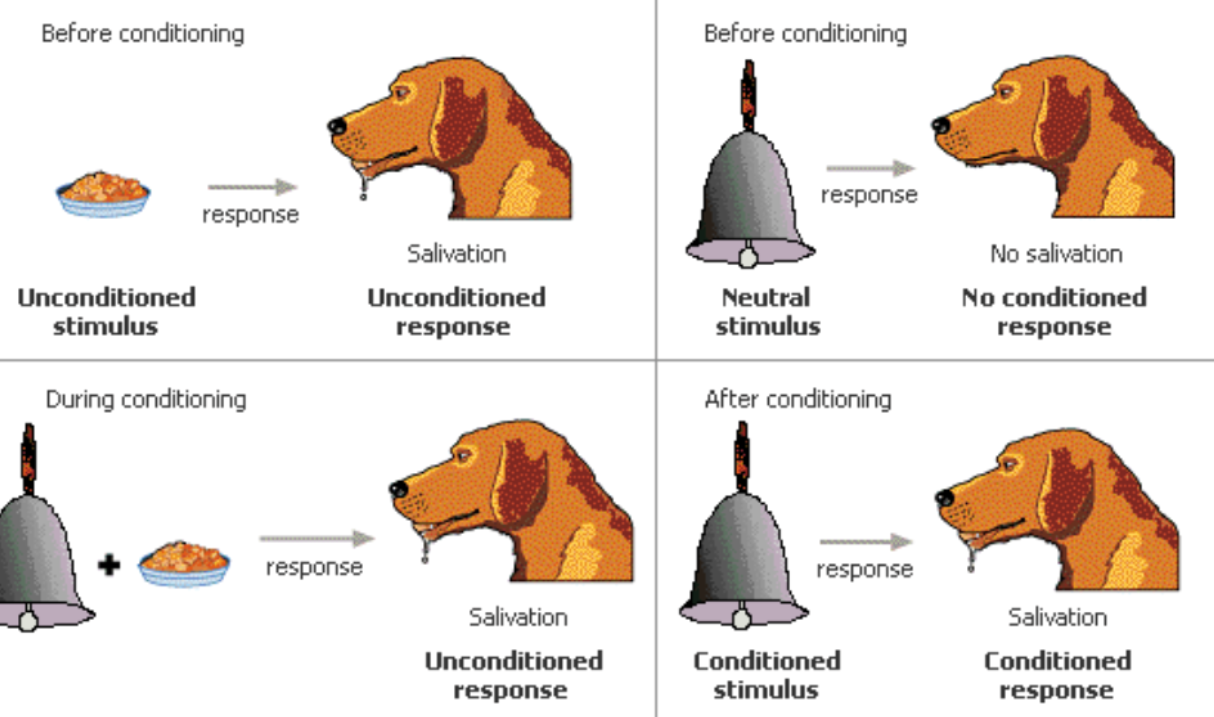
The dogs used in conditioned response experiments by a Russian scientist of the late nineteenth century, Ivan Pavlov. In these experiments, Pavlov sounded a bell while presenting food to a dog, thereby stimulating the natural flow of saliva in the dog’s mouth. Pavlov concluded that if a particular stimulus in the dog’s surroundings was present when the dog was given food then that stimulus could become associated with food and cause salivation on its own.
https://en.wikipedia.org/wiki/Classical_conditioning
Classical conditioning (also known as Pavlovian or respondent conditioning) refers to a learning procedure in which a biologically potent stimulus (e.g. food) is paired with a previously neutral stimulus (e.g. a bell). It also refers to the learning process that results from this pairing, through which the neutral stimulus comes to elicit a response (e.g. salivation) that is usually similar to the one elicited by the potent stimulus.
Classical conditioning is distinct from operant conditioning (also called instrumental conditioning), through which the strength of a voluntary behavior is modified by reinforcement or punishment. However, classical conditioning can affect operant conditioning in various ways; notably, classically conditioned stimuli may serve to reinforce operant responses.
Classical conditioning was first studied in detail by Ivan Pavlov, who conducted experiments with dogs and published his findings in 1897. During the Russian physiologist’s study of digestion, Pavlov observed that the dogs serving as his subjects drooled when they were being served meat.[1]
Classical conditioning is a basic learning process, and its neural substrates are now beginning to be understood. Though it is sometimes hard to distinguish classical conditioning from other forms of associative learning (e.g. instrumental learning and human associative memory), a number of observations differentiate them, especially the contingencies whereby learning occurs.[2]
Together with operant conditioning, classical conditioning became the foundation of behaviorism, a school of psychology which was dominant in the mid-20th century and is still an important influence on the practice of psychological therapy and the study of animal behavior. Classical conditioning has been applied in other areas as well. For example, it may affect the body’s response to psychoactive drugs, the regulation of hunger, research on the neural basis of learning and memory, and in certain social phenomena such as the false consensus effect.

